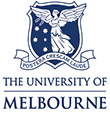Memory T cell formation and phenotype varies across intestinal compartments
Authors:
- Sandford, Sarah
- Evrard, Maximilien
- Burn, Thomas N.
- Christo, Susan N.
- Yakou, Marina H.
- Obers, Andreas
- Alexandre, Yannick O.
- Mackay, Laura K.
- Mueller, Scott N.
Details:
Mucosal Immunology, Volume 18, Issue 5, 2025-10-31
Article Link: Click here
Numerous studies have shown that tissue-resident memory T (TRM) cells form in the intestine following pathogen clearance. However, most knowledge of intestinal TRM cells has derived from analyses restricted to the small intestine (SI). In contrast, less is known about TRM cell formation in the large intestine (LI). Here, we compared the abundance and phenotype of memory T cells across intestinal compartments. Using mouse models of infection, we observed that fewer memory T cells formed in the LI compared to the SI. Moreover, we found that T cells in the epithelium and lamina propria of the LI colon and caecum were phenotypically distinct from SI counterparts, comprising Ly6C-expressing CD8+ TRM cells with a distinct cytokine and granzyme profile. Using both loss- and gain-of-function approaches, we identified site-specific TGF-β dependencies, whereby Ly6C+CD103- TRM cells developed independently of TGF-β in both the SI and LI. In contrast, augmenting TGF-β signalling preferentially expanded Ly6C− TRM populations in the LI but not the SI, indicating that TGF-β signalling drives TRM cell heterogeneity between these compartments. Together, these findings underscore how regional differences in TRM cell responsiveness to local cues shape their development, phenotype, and function along the gastrointestinal tract.


